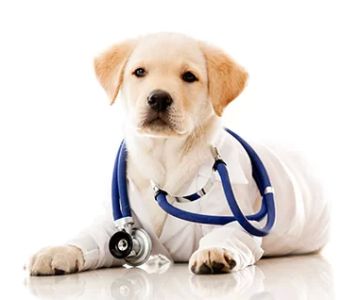Recognizing When Your Pet Needs Urgent Veterinary Care
As a pet owner, ensuring the health and well-being of your furry friend is a top priority. While some health issues may be obvious, others can be more subtle, making it harder to determine when your pet requires urgent veterinary attention. In this article, we’ll cover the key signs that indicate your pet may need to see a vet immediately and how you can respond effectively.
1. Sudden Change in Behavior
Pets are creatures of habit, and any sudden change in behavior can be a red flag. If your pet, whether it's a dog, cat, or another animal, suddenly becomes lethargic, irritable, or overly aggressive, it could indicate a serious health problem. This is especially concerning if the behavior change is accompanied by other symptoms like difficulty breathing or disorientation. For example, my dog, Max, once became unusually lethargic and disoriented after a long walk, which turned out to be a result of heatstroke. If your pet exhibits these signs, don’t hesitate to call a vet.
2. Difficulty Breathing or Coughing
Respiratory problems are a serious concern for pets. If you notice your pet struggling to breathe, wheezing, or coughing excessively, these could be signs of an underlying issue such as heart disease, asthma, or even pneumonia. Immediate veterinary intervention is required in such cases. I once witnessed my cat, Bella, having trouble breathing due to a respiratory infection, and a timely vet visit saved her life. Pay attention to whether your pet’s breathing is labored, and if it worsens, get them to a vet right away.
3. Unexplained Vomiting or Diarrhea
While occasional vomiting or diarrhea may not be cause for alarm, if it becomes severe or persists for more than 24 hours, it could be a sign of a serious issue such as poisoning, an infection, or an obstruction in the digestive tract. When my dog, Charlie, began vomiting frequently and had bloody diarrhea, we rushed him to the vet and discovered he had eaten something toxic. If your pet’s vomiting or diarrhea is severe, especially with additional symptoms like weakness, dehydration, or lethargy, seek immediate medical attention.
4. Difficulty Eating or Drinking
If your pet suddenly refuses food or water, it’s a sign that something is wrong. A loss of appetite can be caused by various issues, ranging from dental problems to more serious conditions like kidney disease or infections. I had a scare when my cat, Luna, stopped eating for two days, which eventually turned out to be a dental infection. If your pet refuses to eat or drink for more than 24 hours, make sure to contact a vet.
5. Abnormal Swelling or Bumps
Swelling or lumps on your pet’s body should never be ignored. While some bumps may be benign, others could signal cancer or an abscess. I remember finding a strange lump on my dog’s side, and it turned out to be a benign tumor. However, it’s always best to have any swelling or new lumps checked out by a veterinarian to rule out serious conditions.
6. Seizures
Seizures are one of the most alarming signs that your pet needs urgent veterinary care. Seizures can be caused by various factors, including epilepsy, poisoning, or severe infections. If your pet experiences a seizure, it’s important to stay calm, clear the area of any objects that could harm your pet, and contact a vet immediately. I once had a pet hamster who experienced seizures, and it required emergency veterinary treatment to get him stabilized.
7. Inability to Stand or Walk
If your pet is suddenly unable to stand or walk, this could indicate neurological problems, fractures, or even severe pain. My dog, Duke, once experienced difficulty walking after a fall, and it turned out he had fractured his leg. Such symptoms should always be taken seriously, and you should take your pet to a vet without delay.
8. Blood in Urine or Stool
Blood in your pet’s urine or stool is a clear indication that something is wrong. It can be a sign of a urinary tract infection, kidney problems, or gastrointestinal issues. I’ve had experience with this when my cat developed a urinary tract infection that caused blood in his urine. This required immediate veterinary treatment to prevent further complications.
9. Excessive Bleeding or Injury
If your pet suffers an injury and is bleeding excessively, it’s critical to get them to the vet immediately. Severe bleeding can result from cuts, bites, or even internal injuries that may not be visible. I had to rush my dog, Buddy, to the vet when he got into a fight with another dog and suffered a deep cut. Prompt treatment ensured that he recovered fully.
10. Excessive Thirst or Urination
Excessive thirst or urination can be symptoms of various health problems such as diabetes, kidney disease, or liver issues. If your pet is drinking more water than usual or urinating excessively, it’s a sign that you should get them evaluated by a veterinarian. I once noticed my dog drinking an abnormal amount of water, which turned out to be a sign of early-stage kidney disease, but early intervention helped manage the condition.
Conclusion
As pet owners, it’s essential to be aware of the signs that indicate your pet needs urgent veterinary care. While some conditions may not be immediately life-threatening, others require prompt intervention to ensure the well-being of your pet. If you notice any of these signs, it’s always better to err on the side of caution and consult a veterinarian as soon as possible. Your pet’s health and happiness depend on your ability to recognize when they need help.











